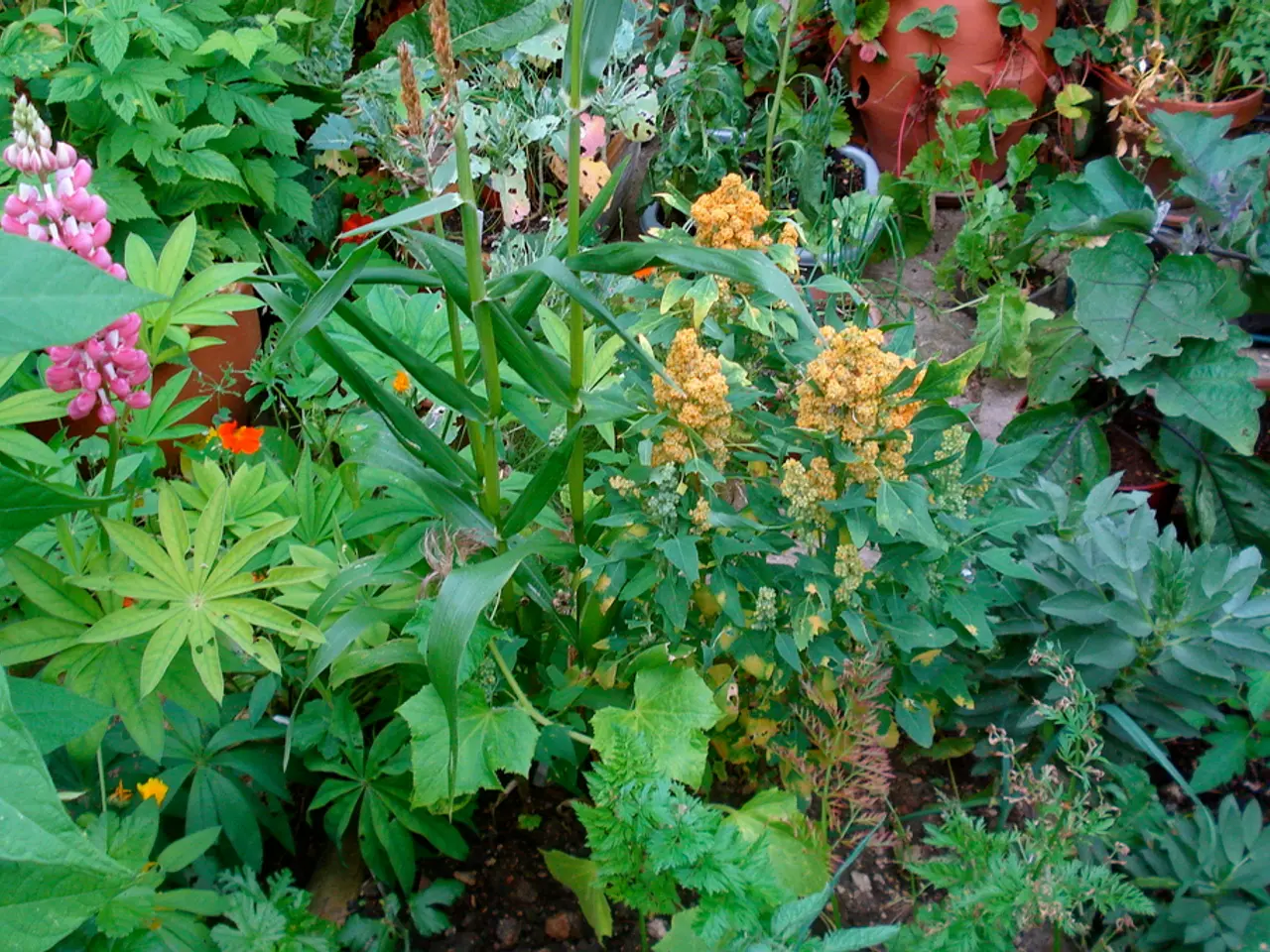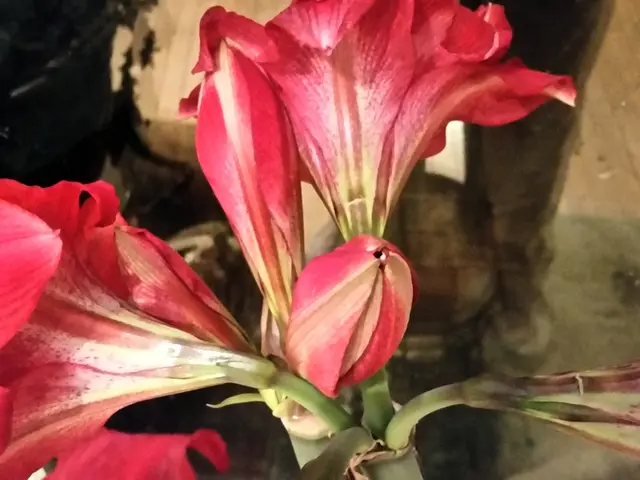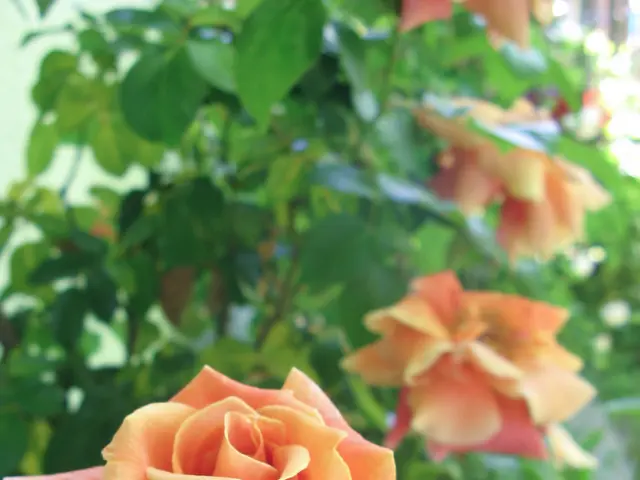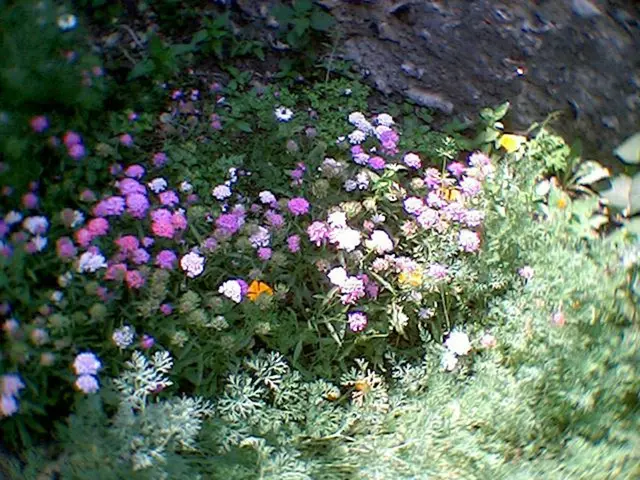Selecting the Ideal Soil for Vibrant Dahlia Blooms
Dazzling Dahlias: Unleashing Their Radiant Beauty
immerse yourself in the vibrant world of dahlias, a versatile genus of herbaceous perennials, native to Mexico and Central America. Prized for their diverse colors and forms, dahlias are sure to add a touch of elegance to any garden.
What You'll Glean
- Dahlias crave loose, well-drained soil
- Pass on store-bought garden soil and chicken manure
- Dahlias shine in sandy, loamy, or slightly acidic soil
- Prepare clay soil by blending sand or peat
- Opt for a fertilizer with minimal nitrogen
Dahlias crave loose, well-drained soil
Sandy, loamy, or slightly acidic soil suits dahlias best. To cultivate dahlias in less-than-ideal soil conditions, such as clay, dry, or compacted soil, consider using raised beds or berms to create optimal conditions. Dig at least a foot deep when preparing your soil for planting dahlias to loosen the earth and provide ample space for tuber growth. The soil should feel loose, dry, and around 55 to 60°F (12-15°C) when planting your dahlia tubers.
Enrich your revitalized soil with compost and an organic, low-nitrogen fertilizer before planting. Mulch and store-bought garden soil aren't suitable for dahlias, as they may harm the tubers.
The Solar Whisperer: Soil Secrets and Sun-Kissed Plants
Curious to explore more?Check out this!
Pass on store-bought garden soil and chicken manure
When introducing your garden to dahlias, remember they fancy loose, rich, and well-draining soil. Store-bought garden soil and chicken manure are a no-go for dahlias as they can potentially harm the tubers.
Go for a balanced fertilizer instead, one that has a lower concentration of nitrogen to encourage blooms rather than excessive leafy growth. Dahlias are resilient plants, but they do demand the right growing conditions to bring out their full potential.
Harnessing Sunrays: Nurturing Soil and Bountiful Harvests
Intrigued? Take a gander at this!
Dahlias shine in sandy, loamy, or slightly acidic soil
Handsome blooms and easy care make dahlias a sought-after plant for any gardener. Sandy, loamy, or slightly acidic soil provides the perfect balance of drainage and nutrient retention for these stunning flowers.
If you've got clay, dry, or compacted soil, don't despair! Simply incorporate sand or peat moss into the soil to boost drainage. Create some raised beds or berms if you live in a rainy area to keep the roots happy.
When it's time to enrich your soil, go for compost and some quality organic fertilizer. Choose a low-nitrogen formula to support vibrant blooms without excessive leaf growth.
The Terrain Tamer: Soil Types, Plant Growth, and Garden Victories
Keen for more valuable insights? Check this out!
Prepare clay soil by blending sand or peat
Dahlias thrive in loose, rich, and well-draining soil. If you have clay soil at your disposal, fret not! You can transform it into a dahlia-friendly garden space with a few simple tweaks.
First, break up the clay soil using a garden fork or tiller. This will loosen it and improve both drainage and aeration. Next, blend in sand or peat moss to create a more well-draining soil structure. Organic matter like compost or manure can also be worked in for added nutrients.
It's a good idea to test your soil's pH level to ensure it's ideal for dahlias, which prefer soil with a pH range of 6.0 to 6.5. If you notice your soil is too acidic or too alkaline, consider using sulfur or lime to adjust the pH accordingly.
Consider creating raised beds or berms if you live in an area with heavy rainfall to ensure your dahlias have the best growing conditions. Dig holes for planting, making sure to space the plants approximately 1.5 feet apart to provide them with ample room to grow.
Opt for a fertilizer with minimal nitrogen
Dahlias don't require constant feeding, but they do benefit from a little boost, particularly when it's time to put on a show of flowers. Use a fertilizer with a balanced N-P-K ratio of around 5-10-10, or one where the nitrogen content is about half that of the potassium and phosphorus content.
Too much nitrogen will result in excessive leaf growth without abundant flowering, so watch out for fertilizers with high nitrogen content. Stick to fertilizers with a mix of potassium and phosphorus to encourage blooms and healthy root growth.
Fertilize your dahlias when planting and then every month until blooming season begins. Keep in mind that over-fertilizing can lead to weakened plants, so use fertilizers sparingly and follow recommended application rates.
So, there you have it! Follow our simple guidelines, and you'll soon be graced with radiant, showstopping dahlias in your very own garden. Happy gardening!
The Root Whisperer: Soil Types and Garden Growth Wonders
Keen for more knowledge? Discover more here!
- To create a perfect home for dahlias, consider incorporating gardening techniques into your home-and-garden lifestyle.
- Adequately preparing the soil, whether sandy, loamy, or slightly acidic, is of utmost importance when cultivating dahlias, as store-bought garden soil and chicken manure may harm the tubers.








